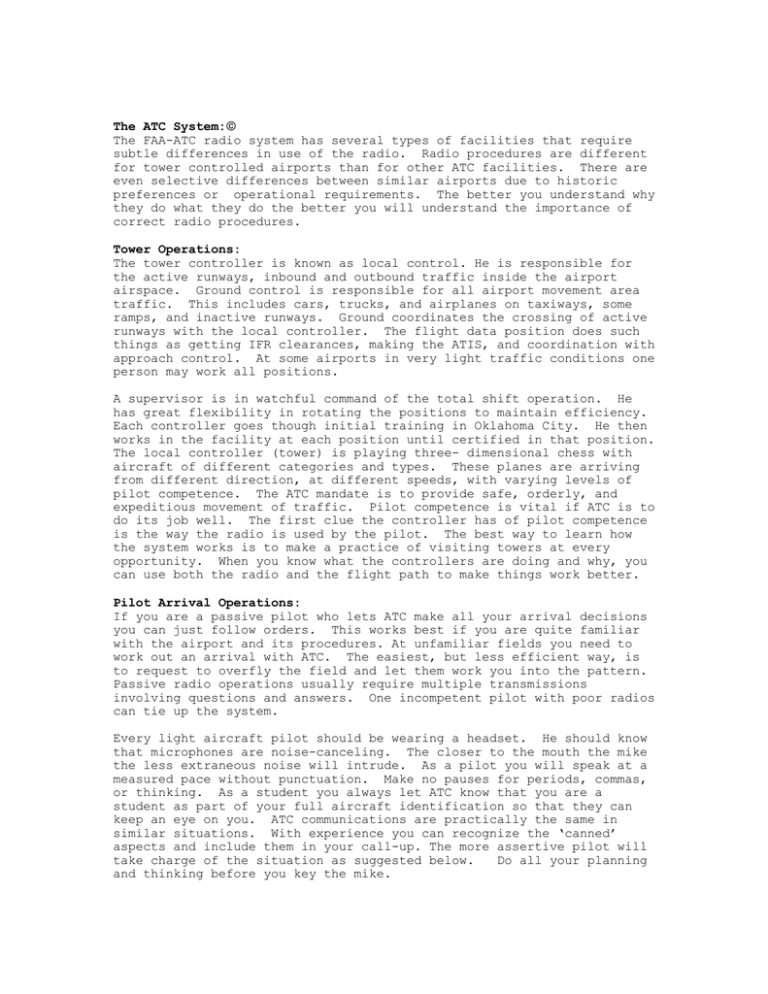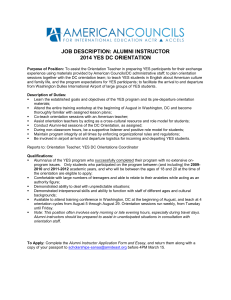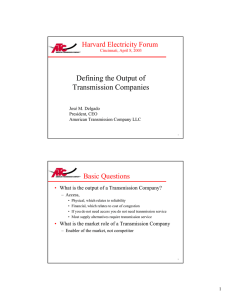The ATC System:
advertisement

The ATC System: The FAA-ATC radio system has several types of facilities that require subtle differences in use of the radio. Radio procedures are different for tower controlled airports than for other ATC facilities. There are even selective differences between similar airports due to historic preferences or operational requirements. The better you understand why they do what they do the better you will understand the importance of correct radio procedures. Tower Operations: The tower controller is known as local control. He is responsible for the active runways, inbound and outbound traffic inside the airport airspace. Ground control is responsible for all airport movement area traffic. This includes cars, trucks, and airplanes on taxiways, some ramps, and inactive runways. Ground coordinates the crossing of active runways with the local controller. The flight data position does such things as getting IFR clearances, making the ATIS, and coordination with approach control. At some airports in very light traffic conditions one person may work all positions. A supervisor is in watchful command of the total shift operation. He has great flexibility in rotating the positions to maintain efficiency. Each controller goes though initial training in Oklahoma City. He then works in the facility at each position until certified in that position. The local controller (tower) is playing three- dimensional chess with aircraft of different categories and types. These planes are arriving from different direction, at different speeds, with varying levels of pilot competence. The ATC mandate is to provide safe, orderly, and expeditious movement of traffic. Pilot competence is vital if ATC is to do its job well. The first clue the controller has of pilot competence is the way the radio is used by the pilot. The best way to learn how the system works is to make a practice of visiting towers at every opportunity. When you know what the controllers are doing and why, you can use both the radio and the flight path to make things work better. Pilot Arrival Operations: If you are a passive pilot who lets ATC make all your arrival decisions you can just follow orders. This works best if you are quite familiar with the airport and its procedures. At unfamiliar fields you need to work out an arrival with ATC. The easiest, but less efficient way, is to request to overfly the field and let them work you into the pattern. Passive radio operations usually require multiple transmissions involving questions and answers. One incompetent pilot with poor radios can tie up the system. Every light aircraft pilot should be wearing a headset. He should know that microphones are noise-canceling. The closer to the mouth the mike the less extraneous noise will intrude. As a pilot you will speak at a measured pace without punctuation. Make no pauses for periods, commas, or thinking. As a student you always let ATC know that you are a student as part of your full aircraft identification so that they can keep an eye on you. ATC communications are practically the same in similar situations. With experience you can recognize the ‘canned’ aspects and include them in your call-up. The more assertive pilot will take charge of the situation as suggested below. Do all your planning and thinking before you key the mike. The call-up to a tower controlled airport should be preceded by several planning steps. You should get the ATIS well away from the airport. This means you will know the direction of the preferred runway. You will know if a substantial crosswind is involved. You will listen and orient other traffic with reference to your arrival. You will plan your arrival so as to make your initial call-up at a selected reference point and altitude. Reference points are best when they are specific identifiable spot locations. Altitudes below 3000 feet AGL are safest when not at even thousands or five hundreds. As a student you would be well advised to write your expected arrival out without any shortcuts. Have it so you can read it off. After doing this a few times the writing will no longer be required. Where multiple runways exist some variations are to be expected. With the planning taken care of, you take a deep breath and practice getting everything out in one smoothly paced flow. While you are practicing you will be listening to the radio for ATC references to both inbound and outbound traffic. Ready begin: “Podunk tower (Cessna 1234X)(reference point)(at altitude)(with ATIS)(arrival path)(will report) (looking for traffic)”. You win if the tower says, “34X approved as requested.” Properly presented and arranged radio work by the pilot helps the controller sort out the factors of aircraft type, position altitude, intentions, and expected report. Making it easy for ATC lets them make it easy for you. Pilot Departure Operations: The tower airport departure is a multi step procedure. First you get the ATIS and talk to clearance delivery if radar is involved. This will involve a transponder squawk, departure route, approach frequency and a read back. Plan your call-up to ground just as you would to tower. If you are uncertain or become uncertain don’t hesitate to advise ATC and get assistance as you taxi. ATC can see the airport much better from the tower than you can from the ground. On completion of your runup you will contact the local control (tower). You have looked in the direction you expect to depart before getting into the aircraft. On getting the ATIS you have planned your runway request for the most efficient departure. If you do not get the most efficient departure runway then you must plan your flight departure to establish the easiest interception of the planned route. All too few pilots request the 270 departure that crosses them over the airport on a course that corresponds to the line drawn on the sectional. Why begin a flight two miles off course if you don’t need to? To help ATC you have named a specific destination rather than a general direction or departure. This provides safer traffic avoidance. A good departure call would be: “Podunk tower Cessna 1234X student pilot ready (runway number)(right 270 on course Xandu)(have any reported traffic)” ATC is required to ‘point out’ any known traffic that may affect your arrival or departure. You should acknowledge that you are looking and when seen you are expected to report ‘traffic in sight’. Any time you report having reported traffic you make a friend of ATC since you then assume traffic avoidance responsibility. If after thirty seconds or so you have no visual contact be sure to advise ATC.




